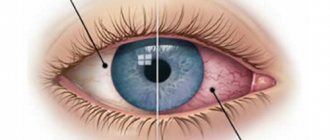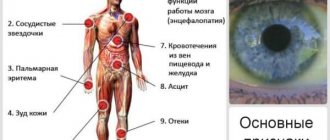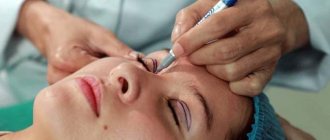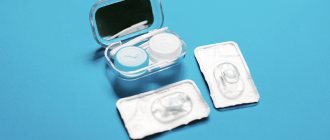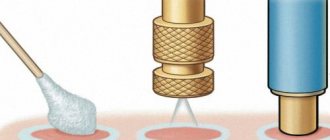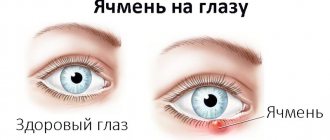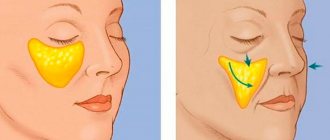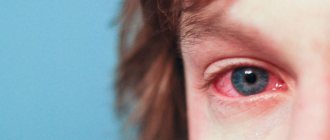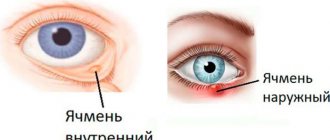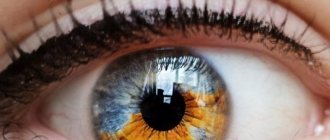Interview with a dermatologist: how coronavirus affected skin diseases and what pharmacies should expect
There are even more patients with dermatitis, for whom the process proceeds with particular persistence - Olga Sergeevna Petrenko, dermatologist, candidate of medical sciences, spoke about skin problems in connection with PPE and complications in the post-Covid period, as well as a likely increase in demand for some groups medicines.
Olga Sergeevna, tell us how the COVID-19 problem affected dermatologists?
Most dermatologists, of course, are not at the forefront of the fight against the immediate manifestations of infection, although in my city the skin and venereal disease bed fund was temporarily given over to patients with Covid. Another point: now any doctor, any pharmacist, any pharmacist receives many alarming questions from their friends and acquaintances: what to do, where to go, what list of medications to stock up on, etc. Dermatologists are no exception. We have to try to relieve panic and do our best to keep patients from excessive self-therapy. In addition, we already have an understanding that coronavirus provokes an exacerbation of many pathologies that manifest themselves on the skin: these are various rashes - vasculitic, urticarial, vesicular, and reactive hair loss during the recovery period after the disease. Fortunately, this does not occur in every first patient.
Does herpetic infection also worsen after coronavirus?
Yes, in the post-Covid period, the viruses of the herpes group that were previously dormant in the nervous tissue raise their heads. I see a large number of patients with requests, and the localization and clinical manifestations are very diverse. For example, herpes zoster can begin with pain in the ear, slight swelling of the eyelid, and only after a few days it begins to manifest itself as a bright clinic with blisters.
How severe is hair loss, how delayed does it occur, and is there already a theoretical explanation for this complication?
“Hair loss” can be very intense, it can bring you to tears every time you comb or wash your hair, and psycho-emotional disorder will only aggravate the existing problems. The timing of the onset is also different. Firstly, hair loss is possible even during the period of illness due to intoxication, fever, taking medications, and secondly, delayed - several months later. But hair restoration will be much slower than patients and doctors would like. Reactive hair loss is not a unique property of Covid; every more or less significant “sore” or stress can end in this. Also in the literature, I came across observations of rapid graying against the background of Covid, the mechanism is associated with stress depletion of melanocyte resources, there are publications of series of cases of autoimmune alopecia areata that do not respond to standard therapy for 1-2 months.
What problems can arise from wearing masks and regularly sanitizing your hands?
Due to the total wearing of masks at appointments, there are even more patients with perioral, perinasal and periorbital dermatitis, in whom the process proceeds with particular persistence. An increase in acne rashes has been recorded, and stress associated with both work overload and the background level of anxiety has increased the number of patients with stress-related acne in adult women. It is believed that an increase in temperature of 1 degree helps to increase the excretion of sebum by 10%, and increased humidity under the mask leads to swelling of the epidermis and acute obstruction of the pilosebaceous duct. Dry skin of the hands is another headache for dermatologists; not only is there a seasonal exacerbation associated with low air humidity, exposure to low temperatures, treacherous winds, forgetfulness in putting on gloves and mittens, but also frequent hygiene makes adjustments - the skin loses valuable lipids , and the natural water-lipid mantle does not play a protective role, eczema of the hands, contact dermatitis, palmar forms of psoriasis, and keratoderma worsen.
Our readers – pharmacy workers – are precisely at risk. Could you give any recommendations on wearing masks and gloves in order to avoid these problems as much as possible?
There is no “genius” single recipe - after all, everyone has different skin types, different reactivity and sensitivity. For some people, creams labeled cica (cyca, zinc + copper) help the area of contact with the mask, i.e. containing an extract of Centella Asiatica, and some people react with an increase in rashes. I would like to encourage you to correctly make a dermatological diagnosis and respond within the framework of clinical recommendations, without attributing it to “parasites,” “bent gallbladder,” or “you’ll give birth and it will pass.” After wearing gloves, it is advisable to let your hands “breathe”, restore the level of lipids and moisture, use high-quality creams; mild dermatological agents are preferred as detergents - syndets (synthetic detergents) and detergent oils. If it is possible to use knitted gloves as a bottom layer, then tolerance can increase significantly, although I agree that fine motor skills can suffer significantly in this “outfit.”
Can you assume that there will be an increase in demand for certain groups of drugs, specifically due to various complications of COVID-19 or even in connection with the prevention of infection?
I assume that the demand for pro- and prebiotics will increase. Unfortunately, many people now collect antibiotics “just in case” and also, just in case, start taking them at the first suspicion of any ARVI. In addition to dysbacteriosis, this is also fraught with toxicoderma, up to very severe skin lesions with peeling of layers from large surfaces (Lyell and Stevens-Johnson syndrome). The demand for various immunomodulators and vitamins may remain stably high due to severe asthenic syndrome in the post-Covid period. I would like to note once again that immunomodulators are a complex and diverse group of drugs and they should be prescribed by the attending physician, based on indications, contraindications and the principle of “do no harm.” Another obvious thing that lies on the surface is that there may be an increase in demand for moisturizing hand care products, for the care and treatment of acne, oral dermatitis, for shampoos and complexes against hair loss, as well as for hormonal topical agents and antiherpetic drugs .
What is important to remember when providing responsible pharmaceutical counseling to patients with exacerbation of herpes?
The golden rule: systemic therapy is prescribed by a doctor after confirming the diagnosis. Sometimes behind the mask of herpes there can be completely different problems - acute pyoderma, eczematous rashes, parasitic and vulgar sycosis (inflammation of the hair follicles). It is possible and necessary to offer external remedies, because it is known that the sooner therapy is started, the less will be the consequences of the action of the herpes virus on cells. You can gradually teach regular clients that having an antiviral tube with them is good manners for a patient with relapses of labial herpes.
What is important to remember when providing pharmaceutical advice to patients with facial rashes?
My recommendation: never support the patient’s desire to treat facial rashes (and it can be anything) with hormonal drugs and activated zinc preparations. This is fraught with the formation of vicious circles, addiction and ends with steroid dermatitis. Now, during the period of constant wearing of masks, everything has begun to worsen: acne, rosacea, seborrheic dermatitis, perioral dermatitis. It is important to understand correctly and prescribe care and treatment. Unfortunately, adjusted for the mask factor, therapy will not be easy.
Olga Sergeevna, thank you very much for the information support of our readers! Do you have a forecast when the second wave of coronavirus will end and it will be safe to work without personal protective equipment?
According to the well-known wisdom “if you want to make God laugh, tell him about your plans,” making forecasts in this case is a thankless task. Everyone: patients, doctors, and pharmaceutical workers are emotionally and physically tired of this onslaught. But in this reality we live by adapting. Flexibility in a broad sense has allowed humans to successfully evolve as a species. I wish everyone good health and optimism!
Interested in the article? You can find out even more in the Expert Opinions section
Possible reasons
The appearance of rashes in the eyelid area, under the eyes and on the cheeks is a marker of pathological changes that occur in the body. The first specialist you should contact about skin lesions in the form of rashes and redness is a dermatologist. An important step in determining the cause of the rash is to undergo a series of tests that will help to correctly diagnose the ailment.
The recent appearance of a mass of medicinal substances with complex effects and advertising around drugs based on them (which does not always correspond to reality), provokes many people who experience various types of rashes to use medications without finding out the true cause of the disease.
The areas of the dermis around the eyes and on the nose are the most sensitive and therefore, it is here that various skin problems appear first, which in essence are one of the symptoms of a pathology developing in the body. The first thing that is required in such situations is to find out the root cause of the phenomenon, which will help solve the problem of selecting the right medications.
A rash under the eyes can appear in different areas, in some cases this helps in the initial diagnosis of the cause.
- Rash under the eyes, on the eyelids. This manifestation is characteristic of an allergic effect on the body through inhalation or contact with various substances (cosmetics, animal hair, dust, plants, food, chemicals).
- Itchy skin, inflammation and rash in the corners of the eyes. The cause of the manifestation must be sought in provoking factors: aggressive environment (freezing, dryness, prickly heat, the smell of smoke, exposure to cosmetics and other chemicals).
Treatment of manifestations in the first case is carried out with medications (antihistamines) or using traditional medicine recipes; in the second, it is desirable to eliminate the source of the aggressive environment and the normal state of the dermis will be restored on its own. If the rash is one of the symptoms of the disease, the doctor prescribes appropriate drugs, the action of which is initially aimed at treating the disease or complex drugs.
Rashes in children
For children, various changes that occur in areas of the dermis are natural phenomena, since it is the skin that first reacts to the negative processes occurring in the child’s body. Children's doctors identify three main factors that manifest themselves in the form of a rash under and around the eyes in children.
- Allergy. The abundance of dyes and other additives in food, exposure to hygiene products mixed with chemical components, reaction to fluff, wool, dust, all these factors can provoke an allergic reaction.
- Infection. Scarlet fever, measles, chickenpox and other diseases that most often affect children have different characteristics of manifestations. The main symptom, which progresses, is a rash on the face, including areas around the eyes and on the cheeks.
- Skin diseases. Miliaria, scabies and other dermatological ailments migrate and are located not only in areas of profuse sweating and in the folds of the skin, but also on the neck, head and around the eyes.
In all of the above cases, it is important for parents to promptly respond to the changes taking place and contact children’s specialists without fail, who, through diagnosis, will help determine the source of the negative impact.
Rash under the eyes (adults)
The skin around the eyes is the thinnest and most sensitive ; there are practically no sebaceous glands. Therefore, she reacts sharply to the most insignificant stimuli .
Photo 1: Redness of the skin around the eyes in adults can be a sign of fatigue, poor nutrition, and mechanical irritation of the dermis. But if a rash appears, this indicates disturbances in the functioning of the body and requires the closest attention. Source: flickr (Light for Hope).
What can trigger an attack
Any allergic reaction develops against the background of decreased immunity to the effects of certain substances. Often, a predisposition to allergies is transmitted at the gene level or is a consequence of previous diseases with long-term treatment. At the same time, the list of what can “trigger” the process and, in particular, cause eyelid dermatitis is quite wide.
The most common irritants that provoke redness of the eyelid increasingly include:
- All kinds of cosmetics. The risk is especially high when using low-quality decorative cosmetics.
- All types of citrus fruits, nuts, chicken eggs, strawberries, many seafood, milk and a number of other foods.
- A microscopic mite that parasitizes the skin of the face. It is noteworthy that these microorganisms can be transferred through the use of the same glasses or cosmetics by several people.
- Incorrectly fitted contact lenses. Thus, an inflammatory reaction can occur as a result of an incorrectly chosen size of optical, cosmetic or decorative lenses, or if the body has not “accepted” the material from which they are made.
- Chemicals added to cleaning products and detergents and used in the chemical or pharmaceutical industries.
- All kinds of medicines. At the same time, both topical agents (drops and ointments) and those taken orally can be equally allergenic.
- The smallest particles of animal skin, feathers or saliva.
- Household or book dust, especially when there is a large accumulation of it.
- Pollen.
- Mold.
- Cold. Especially in windy weather.
We invite you to familiarize yourself with Plaque psoriasis: what it is and how to treat it
Treatment of dermatitis on the eyelids
Treatment is prescribed based on the cause of the disease, severity and individual characteristics of the patient (for example, the presence of ophthalmological diseases).
First of all, the doctor will recommend giving up any care products (soaps, gels, lotions, tonics) and cosmetics (mascara, eyeliner). After this, as a rule, you need to rid your eyelids of scales and scabs. For this purpose, furacilin or chamomile solution is used.
Chamomile solution is used to cleanse eyelids of scales and scabs.
When using traditional methods, you need to consult a doctor
When the eyelids are cleansed, it is recommended to use medications for external or internal use:
- Enterosorbents for removing toxins and allergens (“Enterosgel”, “Polysorb”);
- Antihistamines to relieve itching and inflammation (“Claritin”, “Zyrtec”);
- Hormonal agents (in rare cases). Usually these are corticosteroid ointments;
- Eye drops to relieve inflammation.
Antihistamines to relieve itching and inflammation
When choosing between cream and ointment, it is better to give preference to the second. Creams usually contain many auxiliary elements, which is not very good for this diagnosis
Physiotherapeutic measures are very effective: ultraviolet exposure, magnetic therapy, massage, reflexology, laser therapy, etc.
Symptoms
The peculiarity of the rash is the format, location and reasons that explain the appearance of the symptom. What are the most famous forms of rash known to medicine and what they can mean:
- Contact dermatitis. The symptoms have several complex expressions: on the eyelids there are rashes in the form of blisters and vesicles, the areas where they are located have a red tint.
- Perioral dermatitis. Fine pink rashes covered with white scaly plaque.
- Seborrheic dermatitis. Scaly rashes that are constantly itchy and itchy.
- Generalized amyloidosis. Lumps in the form of nodules that look like papules.
- Herpes. Rashes in the form of pink blisters.
- Neoplasms of a malignant nature. Yellow or whitish nodules with increased density, gradually merging into a single panzer-shaped plaque.
- Demodecosis. Blistering rashes around the eyes due to the presence of iron mites (skin mites).
- Atopic dermatitis. The inflamed areas covered with a rash gradually dry out and peel off. The rash itches very much, and when scratched, blood ichor begins to ooze.
- Hormonal imbalances in the body. A reaction in the form of swelling and redness, which may lead to a rash. In women, this often occurs during menstruation or pregnancy.
- Reaction to stress. Redness or rashes.
- Hypo- and vitamin deficiency. Rashes that can migrate and appear on almost all parts of the body.
Also, the cause of rashes around the eyes can be aggressive exposure to weather conditions in the form of heat, cold, excessive dryness, or other negative factors such as tobacco smoke or evaporation of household chemicals: detergents, antiseptics.
Despite the wide variety of forms of manifestation, any allergy on the eyelids has a number of similar symptoms. The most striking and typical of them are:
- severe itching sensation;
- burning;
- hyperemia of the skin of the eyelids;
- swelling;
- increased photosensitivity;
- the appearance of spots or peeling of the epidermis.
In some cases, these symptoms may additionally be accompanied by increased activity of the lacrimal glands and increased intraocular pressure.
Rash under the eyes (adults)
The skin around the eyes is the thinnest and most sensitive ; there are practically no sebaceous glands. Therefore, she reacts sharply to the most insignificant stimuli .
Photo 1: Redness of the skin around the eyes in adults can be a sign of fatigue, poor nutrition, and mechanical irritation of the dermis. But if a rash appears, this indicates disturbances in the functioning of the body and requires the closest attention. Source: flickr (Light for Hope).
Forms of allergies and their features
According to the classification, there are several forms of eyelid allergies. They are all very similar in their symptoms, but may have a number of differences. Among the most typical:
- Dermatitis on the eyelids. Most often it is a “response” to excessive or improper use of cosmetics. But it can also occur when using certain types of medications (especially with a long course of drug therapy). This form directly affects the eyelids and is characterized by swelling and redness with a gradual increase in itching and burning.
- Psoriasis on the eyelids. Psoriasis can affect only one eyelid or spread to both. One of its distinguishing features is severe peeling.
- Keratoconjunctivitis. A variety of factors can provoke this type of disease: from infections to contact lenses. As a rule, it affects the conjunctiva and cornea of the eye, but its “echoes” also appear on the eyelids. Microscopic formations near the eyelashes allow this form to be distinguished from others.
- Hay conjunctivitis, which occurs due to intolerance to substances contained in the pollen of certain flowers and plants. A characteristic symptom is a rash on the eyelids, accompanied by itching.
- Eczema of the eyelids. A pathology that manifests itself in several parts of the body at once. Like other types of allergies, eyelid eczema can be the result of exposure to an allergen. But this form can also be caused by psychological factors, which include strong emotions and experiences, nervous shocks and a number of others.
Dermatitis on the eyelids in an adult
Psoriasis on the eyelids
Eczema on the upper eyelid
The main prevention of the disease after confirmation of the diagnosis is the maximum reduction of irritants affecting the organs of vision.
In addition, the following will help avoid exacerbation of the disease:
- Minimal use of cosmetics. But even those that are used must be of high quality and hypoallergenic.
- Maintaining hygiene. In particular, after going outside and especially after visiting parks, gardens and other natural areas, you must thoroughly wash your face and hands.
- Cleanliness of the premises. In order to minimize the entry of allergens into the room, it is necessary to ventilate it on windless days and use high-quality air purifiers.
In addition, following a diet that excludes allergenic foods, timely treatment of chronic pathologies and hardening plays an important role.
All these measures will not only reduce the risk of contact with potential allergens, but also strengthen the body’s immune system, which will also reduce the possibility of relapses of the disease.
We suggest you familiarize yourself with Which side is the right way to pierce your nose?
Folk remedies
Traditional medicine recommends dozens of recipes that will help cope with the appearance of rashes around the eyes without using medications.
- Lemon. Lemon is cut into rings and applied to the affected areas for about an hour, after which the surface of the skin is washed with warm water without soap.
- Turmeric juice and coriander. Turmeric powder (1 tbsp) is mixed with coriander juice to form a paste, and the masks are applied overnight.
- Garlic. Depending on the format of the rash, the required concentration of the treatment substance is prepared accordingly and the areas of the skin where the rash is present are wiped with it.
- Wood powder eaten away by insect pests. For 1 tbsp. l. powder in a glass of boiling water, infuse the substance and, after straining, treat the skin with it.
- Olive garlic. 5 cloves of finely chopped (suppressed) garlic are poured into 100 ml of olive oil, allowed to brew for a week and used as oil compresses-masks.
- Oak bark decoction. The product is used for washing.
- Melt water (in winter). Ordinary ice is melted and skin areas are washed with this water.
- Leaf of rue, laurel. The plant is chopped and the juice is released, which must be applied to the skin.
- Wheat oil and celandine. Both substances are mixed and rubbed on the face.
- Decoction of vetch seeds. Use as a drink (course of treatment is 2-3 weeks).
Forms of allergies and their features
For the type of people who are susceptible to various types of rashes on the skin of the face, in particular in the eye area, doctors and cosmetologists advise adhering to certain preventive measures.
- Avoid hypothermia.
- Ventilate the rooms, monitor the required percentage of humidity in the rooms where you are most likely to be.
- Observe the rules of personal hygiene.
- In case of an allergic reaction of the body, take measures to avoid contact with an aggressive environment.
- Maintaining a correct lifestyle.
- Eating fortified foods.
- Do not abuse fatty foods and smoked meats.
As an auxiliary preventive remedy, it is advisable for women, especially during pregnancy, to use nourishing and moisturizing face masks at night. This will help prevent the appearance of rashes due to hormonal imbalances, which during this period often create undesirable effects on the female body.
Psoriasis on the eyelids
Diagnostics
Despite similar symptoms, different forms of the disease may require different treatments. Therefore, before starting treatment, it is necessary to make the diagnosis as accurately as possible. This can only be done by a specialist, and only on the basis of a series of laboratory tests.
In the process of making a diagnosis, you may need the help of an allergist, ophthalmologist and otolaryngologist.
When contacting, any doctor begins making a diagnosis by collecting an anamnesis. After this, if necessary, he prescribes laboratory tests:
- blood;
- tear fluid;
- tissues taken as a result of scraping from the cornea.
These tests make it possible not only to determine the amount of allergen in the body, but also to determine its type, which greatly simplifies further treatment.
First aid
As a rule, allergies on the eyelids begin abruptly and always at the wrong time. At the same time, it can be quite difficult to see a doctor at the first symptoms. However, it is also impossible to leave it “as is” until you can get an appointment with a specialist - it is necessary to urgently take measures to reduce the severity of the reaction.
Also, as part of first aid, you need to wash your face, removing all makeup from it. You cannot use any special means for this, which under some circumstances can only intensify the reaction.
You can quickly get rid of redness and swelling with the help of cool compresses. The simplest option is cotton pads soaked in water and placed briefly in the refrigerator. Instead of water, it is allowed to use decoctions of medicinal herbs, in particular chamomile and calendula. Thanks to the anti-inflammatory and bactericidal substances they contain, they gently and effectively eliminate most unpleasant symptoms.
Drinking plenty of fluids will also help relieve eyelid dermatitis (it is best to use plain water for this). Entering the body, water will help speed up the process of removing harmful substances. Activated carbon, which is one of the best sorbents, will help enhance the process of removing toxins.
Thanks to all these measures, it is possible to quickly reduce allergic manifestations. However, all of them provide only a temporary effect, therefore, as soon as the patient feels a little better, it is necessary to seek professional advice.
What to do if a rash appears under the eyes
Since the skin around the eyes is highly sensitive, rashes can appear from the slightest irritation - intense rubbing of the eyes after sleep, chlorinated water, exposure to soap.
In such cases, it is enough to use folk remedies:
- cucumber slices;
- cold compresses;
- tea leaves
For those with allergies, you can take an antihistamine , which you can probably find in your home medicine cabinet.
Photo 2: If the rash cannot be eliminated within a day, the symptoms intensify, swelling or pain in the eyes appears, you should immediately consult a dermatologist: skin diseases localized near the eyes can lead to loss of vision. Source: flickr (Skin Cancer Center).
After the examination, the doctor will prescribe treatment, which may include :
- diet;
- vitamin preparations;
- allergy medications;
- corticosteroid ointments;
- immunomodulators;
- antibacterial eye drops;
- antibiotics by mouth;
- anti-inflammatory and antifungal agents.
Treatment methods
There are several treatment options that can be combined. The general rules for all types of treatment are to avoid contact with the allergen. In addition, you must refrain from using any cosmetics and strictly adhere to the medication schedule prescribed by your doctor.
This treatment method uses systemic and local antiallergic drugs.
Suprastin, Diazolin or Diphenhydramine are excellent as first aid. Subsequently, in accordance with the doctor’s prescription, they drink Loratadine, Claritin, Telfast, Zyrtec and similar systemic antihistamines.
We invite you to familiarize yourself with Complications after chickenpox in adult women
Local medications include various drops designed to eliminate itching, redness and swelling. Such drugs include Allergodil, Ketotifen, Alomide and others.
Particularly recommended drugs include:
- Faurine balm is based on herbal ingredients that gently relieve inflammation and itching and do not cause side effects.
- Azelastine is a drop suitable for the treatment of acute allergic conjunctivitis and acts almost instantly, which plays an important role in severe inflammatory processes.
- Lecrolin - help to quickly get rid of not only itching and burning, but also reduce the sensitivity of the organs of vision to bright light.
- Opatanol - drops that are good for conjunctivitis and keratitis.
Along with activated carbon, Polysorb or Filtrum can be used as energy sorbents.
What to do if a rash appears under the eyes
Since the skin around the eyes is highly sensitive, rashes can appear from the slightest irritation - intense rubbing of the eyes after sleep, chlorinated water, exposure to soap.
In such cases, it is enough to use folk remedies:
- cucumber slices;
- cold compresses;
- tea leaves
For those with allergies, you can take an antihistamine , which you can probably find in your home medicine cabinet.
Photo 2: If the rash cannot be eliminated within a day, the symptoms intensify, swelling or pain in the eyes appears, you should immediately consult a dermatologist: skin diseases localized near the eyes can lead to loss of vision. Source: flickr (Skin Cancer Center).
After the examination, the doctor will prescribe treatment, which may include :
- diet;
- vitamin preparations;
- allergy medications;
- corticosteroid ointments;
- immunomodulators;
- antibacterial eye drops;
- antibiotics by mouth;
- anti-inflammatory and antifungal agents.
